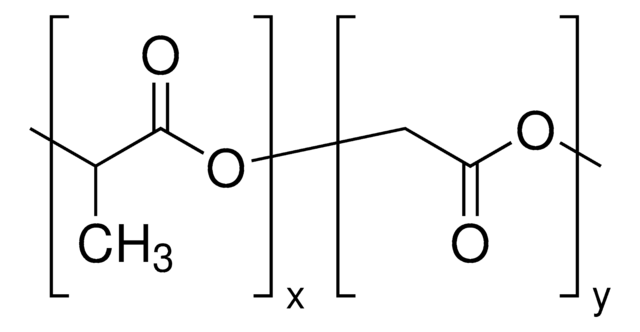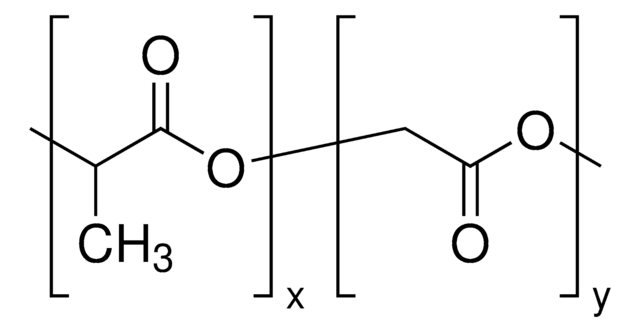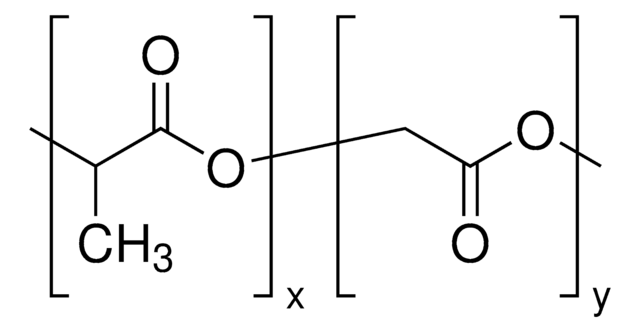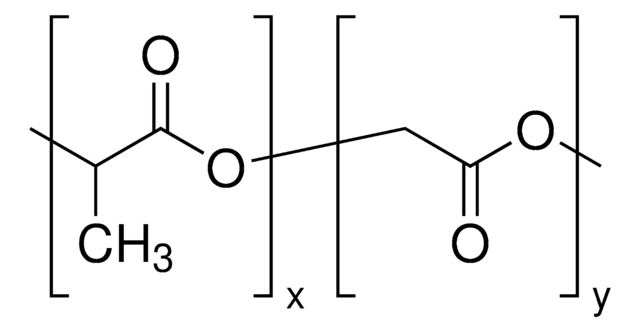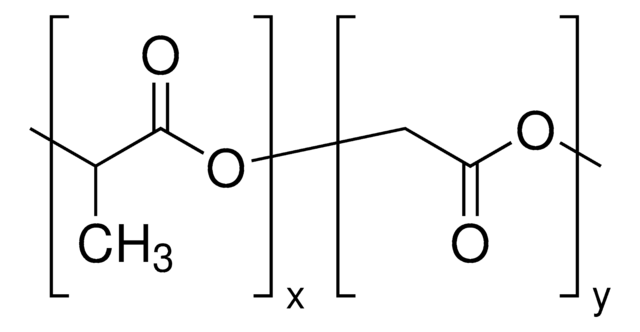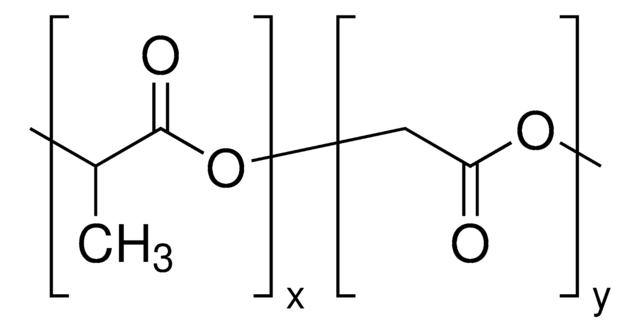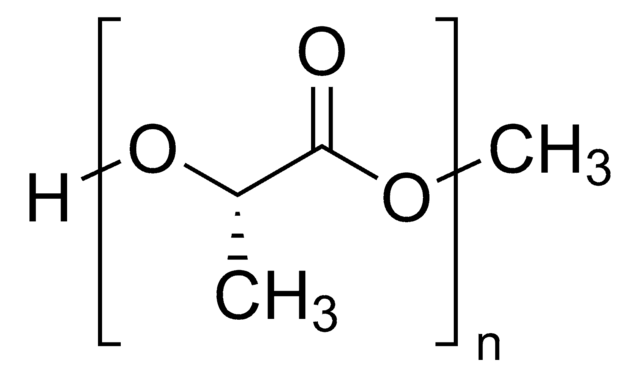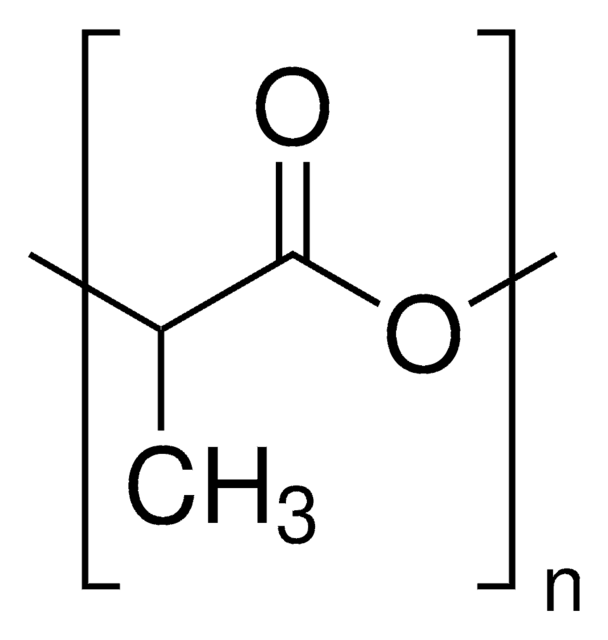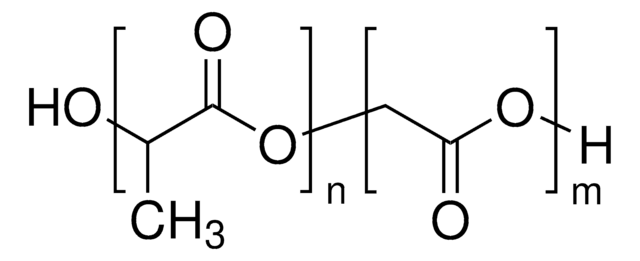719889
Resomer® RG 502, Poly(D,L-Lactide-co-Glycolide)
lactide:glycolide 50:50, ester terminated, Mw 7,000-17,000
Sinônimo(s):
PLGA
About This Item
Produtos recomendados
forma
amorphous
proporção de alimentação
lactide:glycolide 50:50
peso molecular
Mw 7,000-17,000
prazo de degradação
<3 months
viscosidade
0.16-0.24 dL/g, 0.1 % (w/v) in chloroform(25 °C, Ubbelohde) (size 0c glass capillary viscometer)
temperatura de transição
Tg 42-46 °C
Condições de expedição
wet ice
temperatura de armazenamento
2-8°C
Aplicação
Itcan also be used to prepare control release formulations for Naloxone HCldelivery.
Características e benefícios
- Biocompatible
- Biodegradable
- Can be processed into almost any shape and size
- Tunable mechanical properties
Informações legais
Código de classe de armazenamento
11 - Combustible Solids
Classe de risco de água (WGK)
WGK 3
Ponto de fulgor (°F)
Not applicable
Ponto de fulgor (°C)
Not applicable
Certificados de análise (COA)
Busque Certificados de análise (COA) digitando o Número do Lote do produto. Os números de lote e remessa podem ser encontrados no rótulo de um produto após a palavra “Lot” ou “Batch”.
Já possui este produto?
Encontre a documentação dos produtos que você adquiriu recentemente na biblioteca de documentos.
Os clientes também visualizaram
Artigos
The world of commercial biomaterials has stagnated over the past 30 years as few materials have successfully transitioned from the bench to clinical use. Synthetic aliphatic polyesters have continued to dominate the field of resorbable biomaterials due to their long history and track record of approval with the U.S. Food and Drug Administration (FDA).
Aliphatic polyesters such as polylactide, poly(lactide-co-glycolide) and polycaprolactone, as well as their copolymers, represent a diverse family of synthetic biodegradable polymers that have been widely explored for medical uses and are commercially available.
Innovations in polymer technology have had a significant impact on the advancement of novel drug delivery systems.
Nossa equipe de cientistas tem experiência em todas as áreas de pesquisa, incluindo Life Sciences, ciência de materiais, síntese química, cromatografia, química analítica e muitas outras.
Entre em contato com a assistência técnica